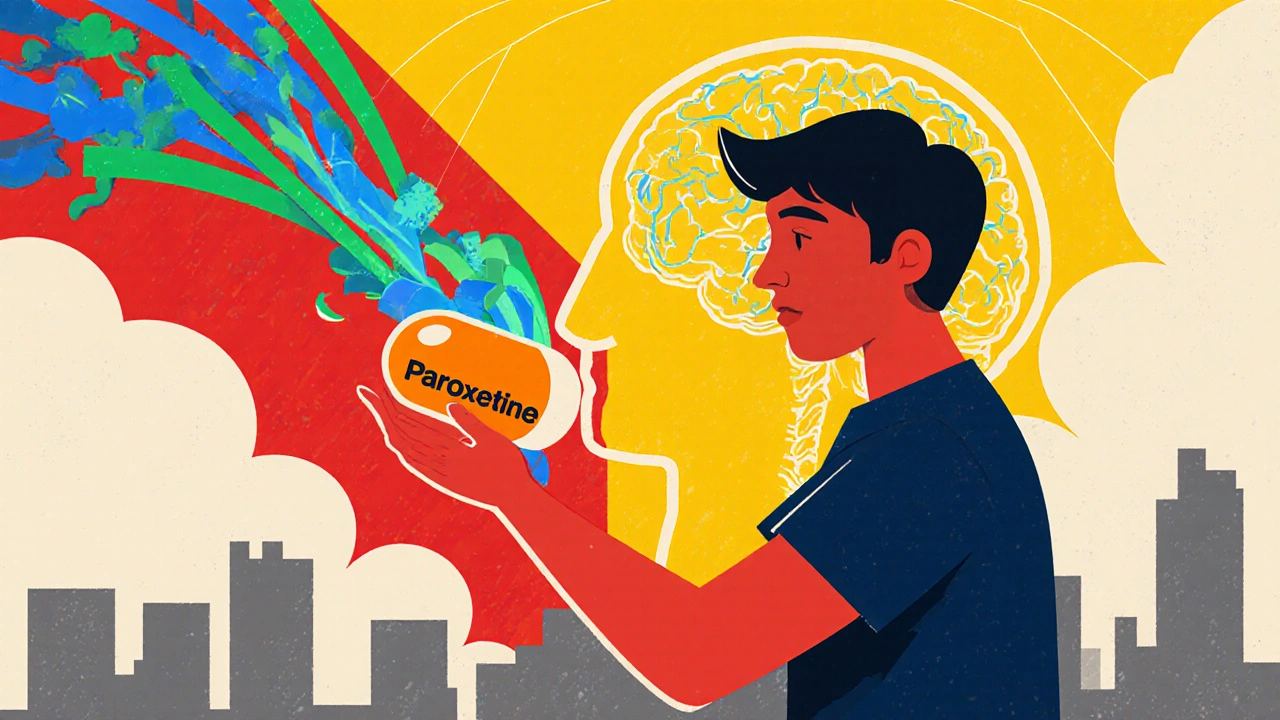SSRI Overview: How Selective Serotonin Reuptake Inhibitors Work
When working with SSRI, a class of antidepressant medicines that block the reabsorption of serotonin in the brain, raising its level in the synaptic gap. Also known as Selective Serotonin Reuptake Inhibitor, it is the most prescribed option for mood‑related disorders. SSRI therapy is built on the idea that more serotonin helps lift mood, ease anxiety, and improve daily functioning.
Depression, the condition most often targeted by these drugs, is defined as a persistent feeling of sadness, loss of interest, and reduced energy that interferes with daily life. Depression, a mental‑health disorder characterized by low mood and diminished motivation often co‑exists with anxiety, another common target for SSRI treatment. Anxiety, excessive worry or fear that can manifest physically and mentally usually shares the same neurotransmitter pathways, so a single SSRI can address both. This overlap creates a semantic link: SSRI treats depression and anxiety by modulating serotonin levels.
Key Players and How They Connect
Serotonin itself is a neurotransmitter that regulates mood, appetite, sleep, and pain perception. Serotonin, a brain chemical that influences emotional and physiological processes is released into the synapse, then normally re‑absorbed by nerve cells. SSRIs block that re‑absorption, so more serotonin stays available to bind to receptors. This mechanism creates a clear subject‑predicate‑object chain: SSRI increases serotonin availability, which helps alleviate depression and anxiety.
SSRI drugs belong to the broader family of antidepressants, medicines used to treat mood disorders by altering brain chemistry. Within that family, SSRIs are the most selective, meaning they focus on serotonin without heavily affecting other neurotransmitters. This selectivity often results in a more tolerable side‑effect profile compared to older classes like tricyclic antidepressants. The relationship can be expressed as: antidepressants include SSRIs.
Practical considerations matter too. Starting doses are usually low, then increased gradually to balance effectiveness and side effects. Common side effects include nausea, headache, and temporary insomnia—most fade after the first few weeks. Because SSRIs can interact with other medications (for example, certain blood thinners or migraine treatments), clinicians always check for drug‑drug interactions before prescribing. This safety step reinforces the semantic link: SSRI requires careful medication review.
Beyond the pharmacology, lifestyle factors play a supporting role. Regular exercise, balanced nutrition, and adequate sleep can enhance the benefits of SSRI therapy. Many patients report that combining medication with cognitive‑behavioral therapy yields faster mood improvement. This illustrates another connection: effective depression treatment combines SSRI medication with psychotherapy and healthy habits.
In the articles that follow you’ll find detailed guides on specific SSRI drugs, how they compare to other antidepressants, side‑effect management tips, and real‑world patient experiences. Whether you’re just hearing the term for the first time or looking to fine‑tune your current regimen, the collection below gives you the practical insights you need to make informed decisions.
How Paroxetine Affects Mood and Emotional Regulation
Explore how paroxetine works, its effects on mood and emotional regulation, common side effects, and tips for managing them, plus a quick SSRI comparison.
Read more
